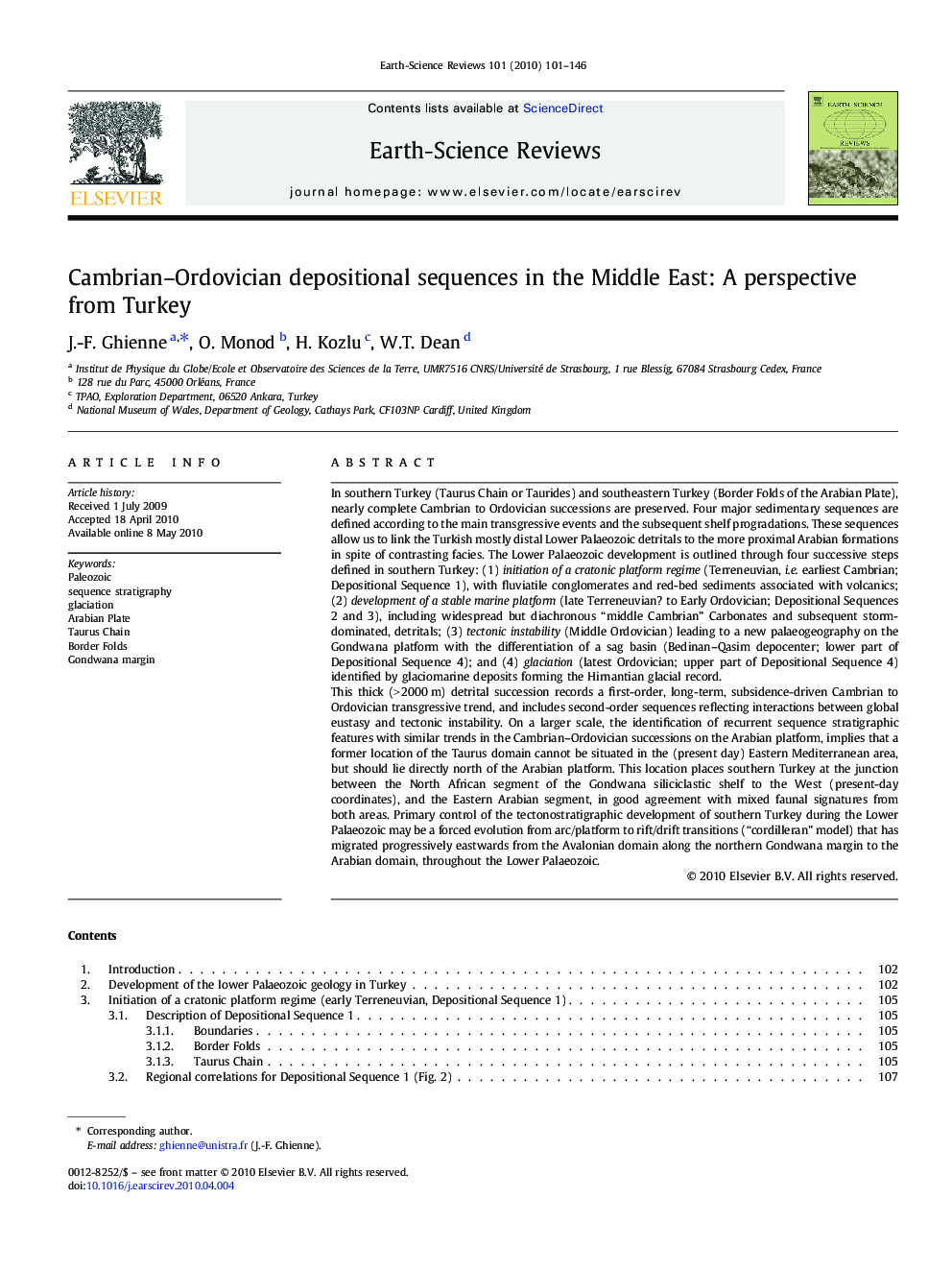| Article ID | Journal | Published Year | Pages | File Type |
|---|---|---|---|---|
| 4726238 | Earth-Science Reviews | 2010 | 46 Pages |
Abstract
This thick (>Â 2000Â m) detrital succession records a first-order, long-term, subsidence-driven Cambrian to Ordovician transgressive trend, and includes second-order sequences reflecting interactions between global eustasy and tectonic instability. On a larger scale, the identification of recurrent sequence stratigraphic features with similar trends in the Cambrian-Ordovician successions on the Arabian platform, implies that a former location of the Taurus domain cannot be situated in the (present day) Eastern Mediterranean area, but should lie directly north of the Arabian platform. This location places southern Turkey at the junction between the North African segment of the Gondwana siliciclastic shelf to the West (present-day coordinates), and the Eastern Arabian segment, in good agreement with mixed faunal signatures from both areas. Primary control of the tectonostratigraphic development of southern Turkey during the Lower Palaeozoic may be a forced evolution from arc/platform to rift/drift transitions (“cordilleran” model) that has migrated progressively eastwards from the Avalonian domain along the northern Gondwana margin to the Arabian domain, throughout the Lower Palaeozoic.
Related Topics
Physical Sciences and Engineering
Earth and Planetary Sciences
Geology
Authors
J.-F. Ghienne, O. Monod, H. Kozlu, W.T. Dean,
